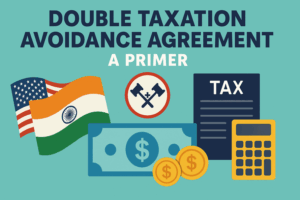
In early November 2025 India’s capital‑markets regulator, the Securities and Exchange Board of India (SEBI), issued an advisory cautioning investors about “Digital Gold” or “E‑Gold” products promoted by various apps and fintech platforms. The regulator noted that many of these offerings lie entirely outside SEBI’s regulatory framework and therefore carry “significant risks”. Since digital gold has become popular among small investors who want to purchase tiny quantities of gold without visiting a jeweller, SEBI’s warning has raised a crucial question: are all digital gold investments at risk? This post unpacks the advisory, explains how digital gold works and highlights safer alternatives for gold investing.
What Is Digital Gold?
Digital gold refers to services that allow users to buy fractions of gold online through an app or website. When you purchase through these platforms, the provider credits an equivalent quantity of 24‑carat physical gold to your account and claims to store the metal in an insured vault. You receive a digital record of your holdings and can sell the gold back to the platform or request physical delivery of coins or bars. Digital gold is marketed as easy and flexible: you can start with as little as ₹10 and buy or sell at any time without worrying about storage. These features have made it a popular alternative for people who want a convenient way to accumulate gold.
However, it’s important to understand that digital gold is not the same as regulated gold investment products like Gold Exchange‑Traded Funds (ETFs), Sovereign Gold Bonds (SGBs) or Electronic Gold Receipts (EGRs). Digital gold sellers are often private companies or jewellers; they don’t always fall under SEBI’s jurisdiction and may not provide statutory investor protection.
Summary of SEBI’s Advisory
On 8 November 2025 SEBI issued a public advisory titled “Caution to public regarding dealing in ‘Digital Gold’”. The key points of the advisory are summarised below:
- Not classified as securities or commodity derivatives: SEBI clarified that digital gold products are not recognised as securities or regulated commodity derivatives. They therefore operate outside SEBI’s purview.
- Different from SEBI‑regulated gold products: The regulator emphasised that investments in gold should be made through SEBI‑regulated products such as gold ETFs, exchange‑traded commodity derivatives and Electronic Gold Receipts (EGRs), all of which must be accessed through SEBI‑registered intermediaries. These instruments are backed by regulatory safeguards and clear rules.
- Significant risks: Because digital gold is unregulated, investors are exposed to counterparty and operational risks. SEBI warned that none of the investor protection mechanisms under securities law apply to digital gold, meaning buyers rely entirely on the integrity and solvency of the platform provider.
- Investor caution: SEBI’s advisory urges investors to verify whether a product or intermediary is regulated before investing and to prefer SEBI‑regulated gold instruments.
Why Is Digital Gold Considered Risky?
The caution from SEBI doesn’t imply that buying digital gold is illegal; rather, it highlights specific risks investors must understand:
- Lack of regulatory oversight: Since digital gold isn’t classified as a security or commodity derivative, SEBI and the Reserve Bank of India do not supervise these products. There’s no independent check on how companies handle investor funds or whether the claimed gold actually exists.
- Counterparty risk: Investment advisor Abhishek Kumar notes that the major risk comes from dealing with an unregulated platform. If the company fails or refuses to deliver, investors could lose their holdings. There is no investor protection fund to compensate for defaults.
- Operational risk: Without regulatory audits, investors can’t verify the quality and quantity of gold stored on their behalf. Fake invoices, inadequate vaulting or poor insurance could jeopardise the security of your gold.
- Hidden charges: Some platforms impose delivery, storage or making‑charges that aren’t transparent. Over time, these fees can erode returns.
Impact of SEBI’s Warning
SEBI’s advisory has created uncertainty among existing digital gold investors. It’s important to recognise that SEBI has not banned digital gold, but it has underlined that these products are unregulated and risky. Investors should not panic; rather, they should review their holdings and understand the difference between unregulated digital gold and regulated gold investments.
Are All Digital Gold Investments at Risk?
The short answer is no, not all forms of digital gold are inherently dangerous, but the risk level depends on whether the product is regulated. Here’s a nuanced view:
| Gold investment type | Regulation & issuer | Minimum investment | Liquidity & redemption |
|---|---|---|---|
| Digital gold on fintech/jeweller apps | Unregulated – issued by private platforms; not recognised as securities or commodity derivatives | Low (₹10–₹100) | Can buy/sell anytime on the platform, but redemption relies on provider’s solvency; limited legal recourse |
| Gold Exchange‑Traded Funds (ETFs) | SEBI‑regulated mutual fund units backed by physical gold | Typically the cost of one unit (~1 gram of gold) | Traded on stock exchanges; regulated custody and valuation |
| Electronic Gold Receipts (EGRs) | SEBI‑regulated receipts representing gold stored in approved vaults | Cost of one receipt (often 1 gram) | Tradeable on stock exchanges; investor protection applies |
| Sovereign Gold Bonds (SGBs) | Government‑issued bonds denominated in grams of gold; pay annual interest | Minimum 1 gram in each issue | Tradable on exchanges after lock‑in; redemption after five years; no storage fees |
| Physical gold & coins | Not a financial security; subject to hallmarking rules; consumer law applies | Varies by product | Immediate possession; must arrange storage and security |
Unregulated digital gold platforms (mostly fintech apps and jewellery brands) are where the risk lies. These companies may be reputable, but because they operate outside SEBI’s framework, investors have limited legal recourse if something goes wrong. In contrast, gold ETFs, EGRs and SGBs are supervised by SEBI or the Government of India, provide transparent pricing and have safeguards like trustee oversight and insurance.
What Should Digital Gold Investors Do?
- Assess your current platform: If you hold digital gold, find out who the provider is. Are they a recognised jeweller or a fintech start‑up? Do they work with a trusted refiner or vault? Even though these details don’t guarantee safety, they can help you judge credibility.
- Check for regulatory status: Many platforms claim partnerships with regulated entities but still operate outside securities law. Verify whether the product is listed as an ETF/EGR or sold through a SEBI‑registered intermediary.
- Consider redeeming or switching: If your digital gold holdings are significant, you may want to redeem them into physical gold or shift to SEBI‑regulated instruments like gold ETFs, EGRs or SGBs. Redemption fees might apply, but regulatory protection may be worth it.
- Diversify and limit exposure: Use digital gold for small, convenience‑based purchases rather than long‑term savings. Abhishek Kumar suggests that while digital gold can be useful for tiny amounts, longer‑term or large holdings should be moved to regulated products.
- Consult a financial advisor: Before making any major investment decision, seek advice from a qualified, SEBI‑registered advisor. They can help you evaluate the tax implications and risk profile of different gold investments.
Beyond Digital Gold: Safer Ways to Invest in Gold
SEBI’s advisory highlights safer avenues to get exposure to gold:
- Gold ETFs: Units representing physical gold held by a custodian. They trade like stocks, have transparent pricing and are regulated by SEBI. ETFs are suitable for investors who want liquidity and low transaction costs.
- Electronic Gold Receipts (EGRs): Tradeable receipts representing gold stored in SEBI‑approved vaults. EGRs combine the convenience of digital trading with regulatory oversight.
- Sovereign Gold Bonds (SGBs): Government bonds denominated in grams of gold. They pay a fixed interest (currently 2.5 % per year), and capital gains are exempt from tax if held to maturity. SGBs are ideal for investors with a long‑term horizon.
- Physical gold: Buying hallmarked jewellery or coins ensures actual possession. While storage and insurance costs apply, physical gold doesn’t carry counterparty risk.
Conclusion
Digital gold has made gold investing accessible to millions by allowing micro‑purchases and instant redemption. However, SEBI’s recent advisory is a reminder that convenience shouldn’t eclipse regulatory oversight and investor protection. Not all digital gold investments are doomed, but the unregulated nature of many platforms exposes investors to counterparty and operational risks. The safest way forward is to verify the regulatory status of any gold product, use digital gold only for small, short‑term needs, and prefer SEBI‑regulated instruments like ETFs, EGRs and SGBs for meaningful investments.
By understanding the differences between unregulated digital gold platforms and regulated gold products, investors can protect their wealth and make informed decisions in line with SEBI’s caution. When in doubt, consult a professional advisor and remember that true wealth preservation comes from transparency, regulation and diversification.







